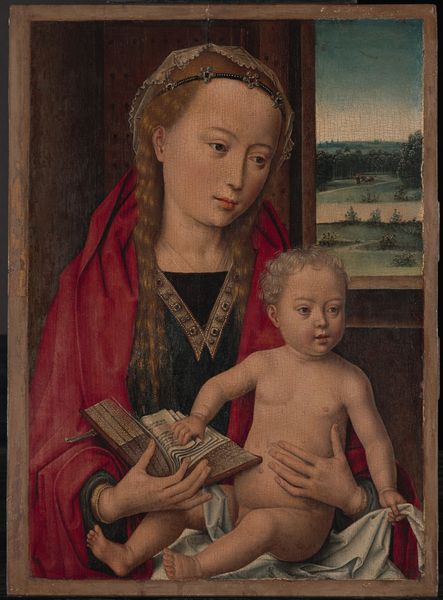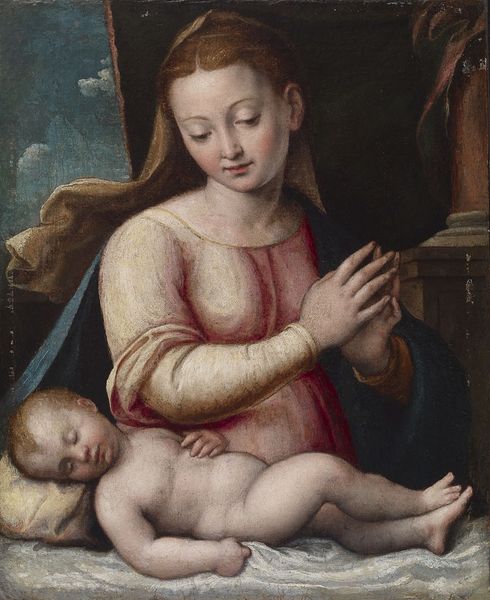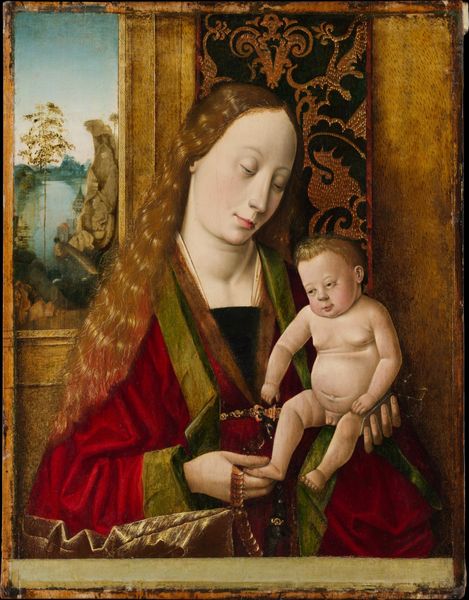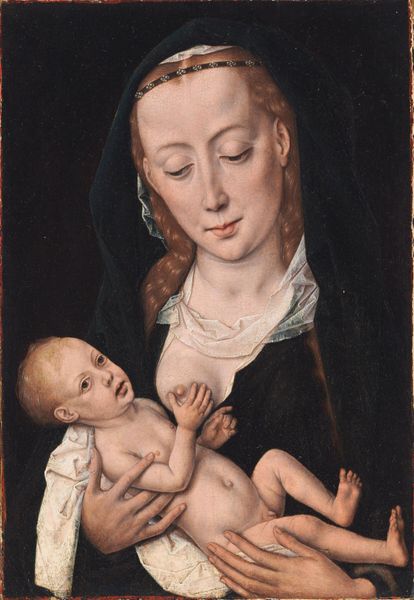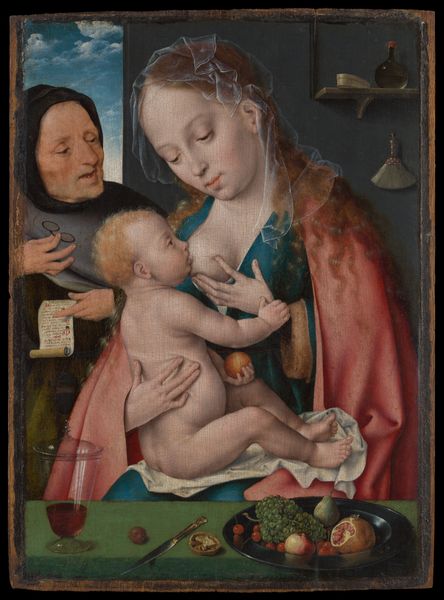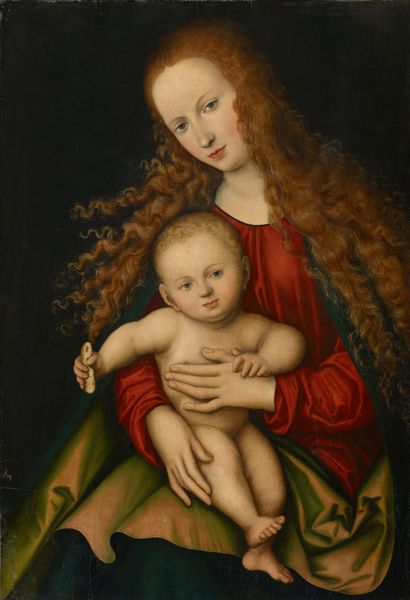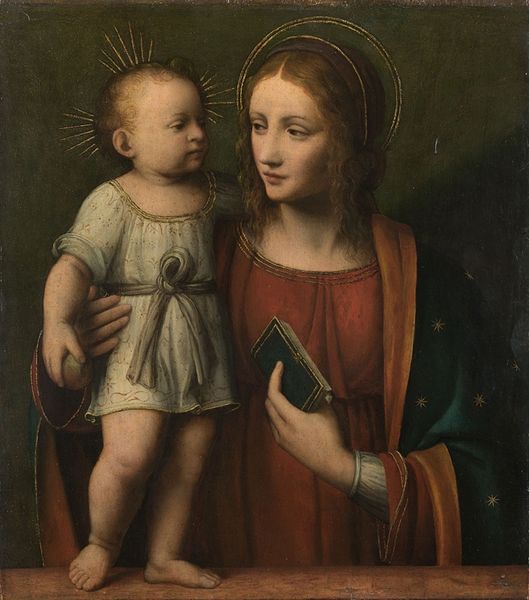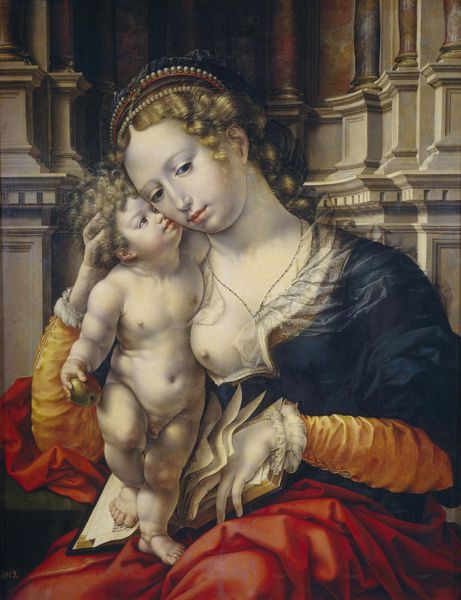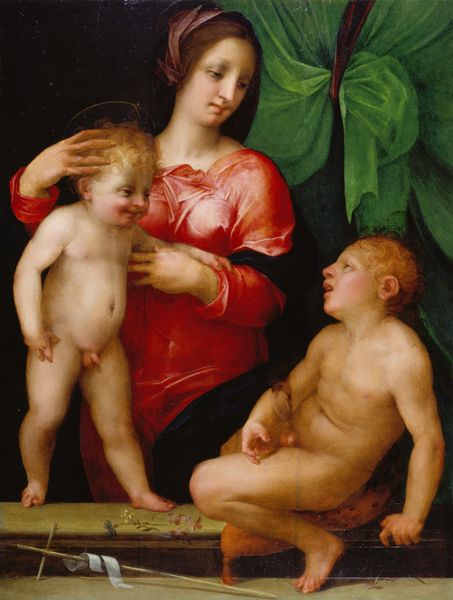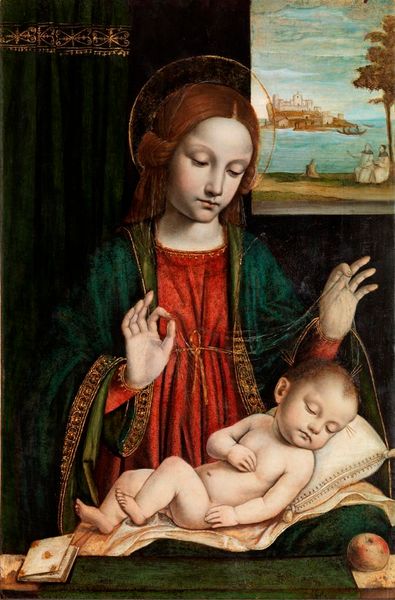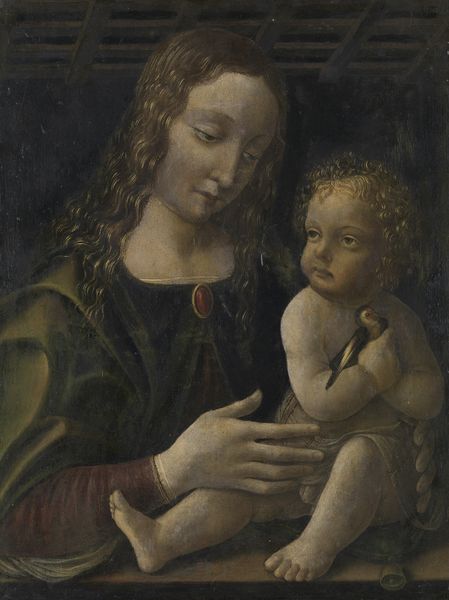
oil-paint
#
portrait
#
oil-paint
#
figuration
#
oil painting
#
history-painting
#
italian-renaissance
Dimensions: support height 19 cm, support width 14 cm, depth 5.5 cm
Copyright: Rijks Museum: Open Domain
Curator: Here we have "Virgin and Child," an oil painting likely created between 1520 and 1540, attributed to the Master of the Female Half-Lengths. It’s a remarkable piece for its depiction of maternal tenderness within a formal, almost austere, composition. Editor: My first impression is a sense of gentle stillness, punctuated by those vibrant red cherries. It’s quite striking. There’s a softness to their skin tones against the dark background, almost like a sculptural relief. Curator: The contrast is definitely intentional. Images of the Virgin and Child circulated widely at the time, playing a significant role in both personal devotion and public representation of civic values centered on family and faith. Editor: Cherries, of course, have a loaded history in religious art. They represent Paradise, or the sweetness of Heaven, a symbolic foretaste of the divine reward through Christ's sacrifice. It's quite skillfully placed in the Madonna’s fingers as Christ reaches toward it. Curator: Precisely. The artist has clearly tapped into well-established iconographic conventions, all within a specific socio-political context, namely the visual culture of Renaissance humanism that celebrated idealized beauty, and promoted an emphasis on religious morality. The Virgin isn’t simply a maternal figure; she is a symbolic conduit. Editor: There’s almost a detached quality about the Virgin, though, isn’t there? She looks off to the side, distant as if she is already envisioning His future sacrifice. I think it adds layers to this painting; she’s maternal yet almost regal in her stoicism. Curator: Yes. One of the things to consider is how images like these functioned, often adorning private homes but also deployed during public festivals, emphasizing religious observance but also social stability within Italian Renaissance culture. Editor: The lasting impact lies, I think, in the subtle interplay between the intimate gesture of the breastfeeding and the grand theological themes—a blend of human connection and eternal meaning. Curator: It’s a potent reminder that these images served to cement powerful structures of belief while inspiring more immediate emotions. Editor: Absolutely. Seeing these familiar symbols with new historical awareness really enriches the experience.
Comments
No comments
Be the first to comment and join the conversation on the ultimate creative platform.

